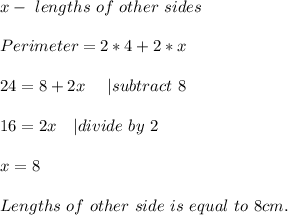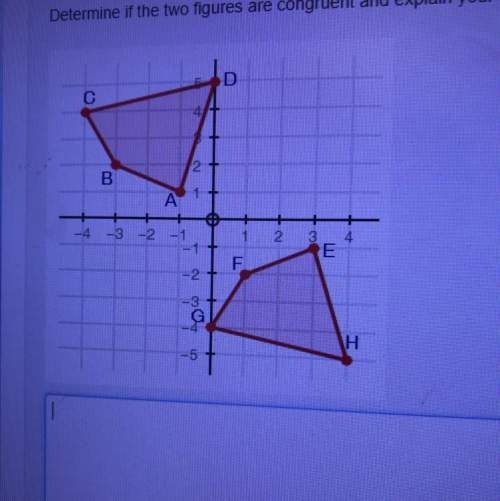
Mathematics, 20.08.2019 02:00 tonio638
The perimeter of a rectangle is no more than 24cm. the two opposite sides are each 4 cm long. what are the possible lengths of the other two sides?
explain what you did and why

Answers: 1


Another question on Mathematics

Mathematics, 21.06.2019 18:40
Juliana says that she can use the patterns of equivalent ratios in the multiplication table below to write an infinite number of ratios that are equivalent to 6: 10. which statement explains whether juliana is correct? she is correct because she can multiply 6 and 10 by any number to form an equivalent ratio. she is correct because 6: 10 can be written as 1: 2 and there are an infinite number of ratios for 1: 2. she is not correct because the multiplication table does not include multiples of 10. she is not correct because 6: 10 is equivalent to 3: 5 and there are only 9 ratios in the multiplication table that are equivalent to 3: 5.
Answers: 1

Mathematics, 21.06.2019 18:50
The random variable x represents the number of phone calls an author receives in a day, and it has a poisson distribution with a mean of 8.7 calls. what are the possible values of x
Answers: 1

Mathematics, 21.06.2019 18:50
Determine if the function below is continuous. a. continuous b. not continuous, 1 hole c. not continuous, > 2 holes d. not continuous, 2 holes
Answers: 1

Mathematics, 21.06.2019 19:00
Identify the type of observational study described. a statistical analyst obtains data about ankle injuries by examining a hospital's records from the past 3 years. cross-sectional retrospective prospective
Answers: 2
You know the right answer?
The perimeter of a rectangle is no more than 24cm. the two opposite sides are each 4 cm long. what a...
Questions



Mathematics, 21.09.2019 05:10

Advanced Placement (AP), 21.09.2019 05:10

English, 21.09.2019 05:10


Advanced Placement (AP), 21.09.2019 05:10

















